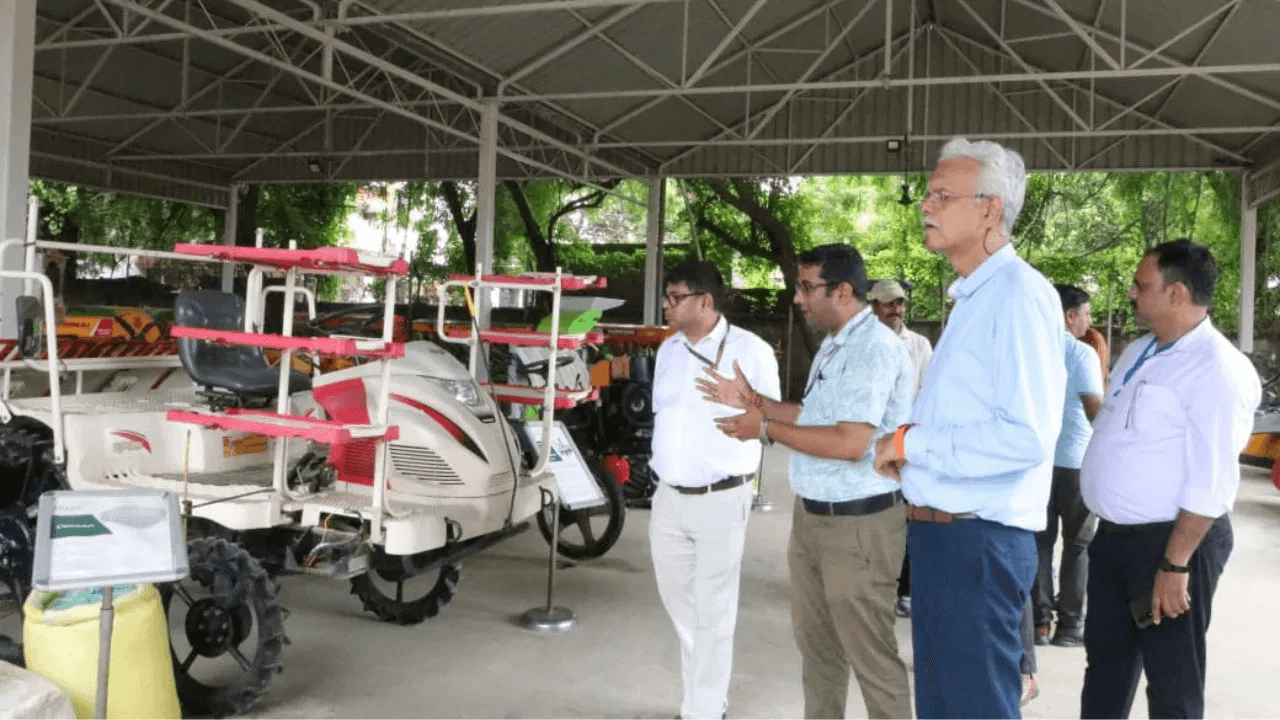Tags
Indonesia’s Perennial Rice Self-Sufficiency Problem

A drop in rice production due to a prolonged dry season has led to rice scarcity in Indonesia. (Photo by Maxime Gruss / Hans Lucas via AFP)
Indonesia is striving to achieve rice self-sufficiency, amid rising geopolitical and global rice market uncertainties. The country must take climate change and its disrupting impact on food production more seriously.
In Indonesia, rice scarcity and sharp food price hikes before Ramadan are a regular occurrence. But this election year, rice demand has been particularly high, boosting rice prices by almost 20 per cent to an all-time high of Rp 15,157 per kg in February. A drop in rice production due to a prolonged dry season has also led to rice scarcity and long buying queues in traditional markets.
Some have attributed the unusually high demand spike at the start of 2024 to rice handouts by political parties to garner votes. The government has already dipped into its rice reserves, which currently stand at 1.4 million tonnes at Bulog (a state body in charge of rice distribution), and is now reverting to rice imports ⸺ to the tune of 2-3 million tons this year ⸺ to close the deficit of demand exceeding supply and bring down prices.
Rice is a strategic commodity as it is a main food staple for most Indonesians and a mainstay of national food security. The rice sector remains a key employer in rural Indonesia and still accounts for 2.3 per cent of GDP. With rising geopolitical and global rice market uncertainties, the government is also striving to achieve rice self-sufficiency, in the face of climate change and urban migration trends that attenuate agricultural productivity and labour supply.
Indonesia’s rice production, of which 93 per cent meets domestic demand, perennially falls short of consumption (Figure 1). Rice consumption temporarily declined during the 2021 pandemic year, thus narrowing the rice deficit as reflected in the ratio of production to consumption, which increased to 97.5 per cent from 96.4 per cent the year before. However, in the post-pandemic period demand stabilised, then increased to 35.7 million metric tons in 2023. The country’s high per capita rice consumption has not changed much; as Indonesia’s population rises, so does rice consumption.
Figure 1. Indonesia’s post-pandemic widening rice deficit: falling production and rising consumption

Meanwhile, rice production continues to decline, reaching only 34 million metric tons in 2023, thus lowering the production-per-consumption ratio to 95.2 per cent in 2023. The problem on the production side is complex. Indonesia’s agricultural land is shrinking with expanding urban development, soil has deteriorated due to excessive use of fertilisers, material input costs are rising, and farm labour is getting older and scarcer as the rural young increasingly seek non-agricultural jobs. Climate change, through extended and hotter droughts during the dry seasons and flood-causing torrential rains during the wet season, is also seriously disrupting rice yields and harvest timings.
There remains a widespread mindset that the impact of extreme weather is just a temporary phenomenon, which hinders serious efforts to develop sustainable farming and shifting to carbohydrate alternatives.
Given rice’s considerable economic impact, the government has struggled to balance two key conflicting objectives: first, to protect consumers by keeping rice prices affordable; second, to protect farmers’ income by preventing rice prices from dropping too low. Maintaining this delicate balance has become more challenging with climate change.
It is important for Indonesia to take climate change and its disrupting impact on food production more seriously. There remains a widespread mindset that the impact of extreme weather is just a temporary phenomenon, which hinders serious efforts to develop sustainable farming and shifting to carbohydrate alternatives.
Indonesia needs to step up the introduction and distribution of drought-tolerant rice seed varieties, and improve irrigation systems to enhance water management. It can learn from other countries in adapting to climate change. In Bangladesh and Vietnam, rice farmers adjust the timing of planting in accordance with changing weather patterns. Their food research institutes produce seed varieties that can withstand higher temperatures and soil salinity in coastal areas. They are also working on varieties that use less fertiliser. In Vietnam, farmers are moving away from fertiliser-intensive three-harvests-a-year rice production that depletes soil nutrients. With water levels running low, farmers are also resting their rice fields after rice harvests and planting alternative, drought-tolerant crops, such as cassava, corn or sesame seeds, during the dryer months.
These efforts might not be enough to cover Indonesia’s rice deficit, so imports might still be needed. In the longer term, the government plans to achieve food security and rice self-sufficiency through its massive food estate programmes in Central Kalimantan and North Sumatra. These programmes are currently facing teething start-up problems ranging from insufficient preparatory planning, inadequate infrastructure, soil suitability issues, and adverse social and economic impacts. Moreover, there are serious capacity constraints in coordinating and managing such a large undertaking.
Given the competition for budgetary funds with the new government’s numerous plans and commitments, it might be advisable to scale down the ongoing food estate programme to a more manageable “pilot project” size. This would make it easier to monitor and assess, and to make necessary changes and improvements before scaling up.
Priority should be placed on the problems of climate change-induced declining rice production on existing arable land, given the country’s limited resources. Once the food estate programme’s pilot projects can identify and remedy large-scale food production problems then hopefully Indonesia can start narrowing its rice deficit.
2024/101
https://fulcrum.sg/indonesias-perennial-rice-self-sufficiency-problem/Published Date: April 9, 2024






